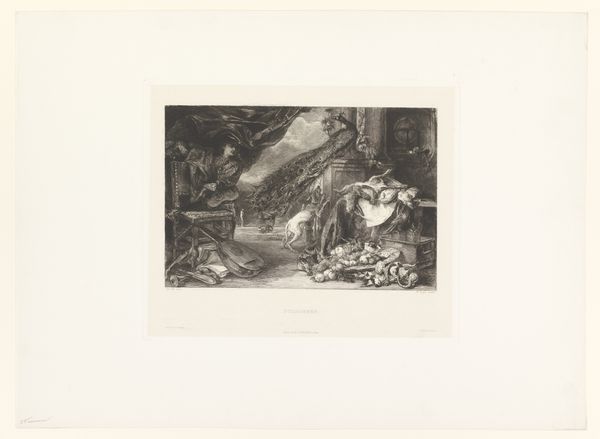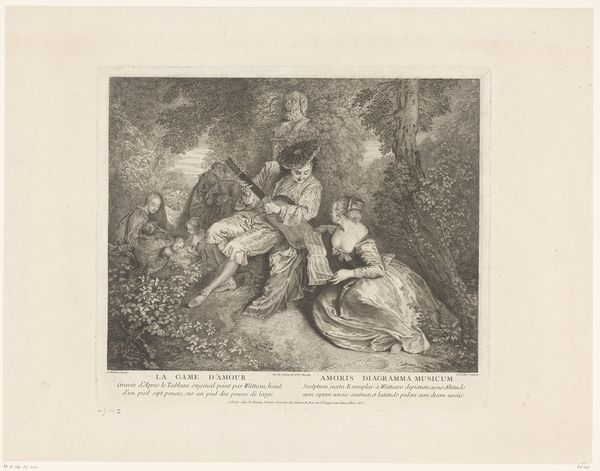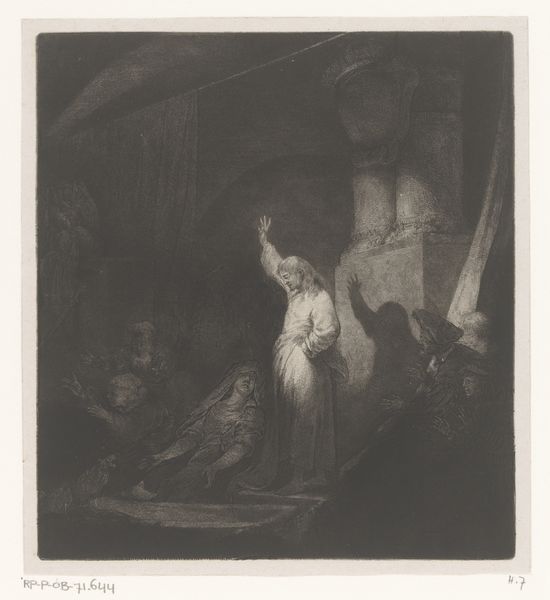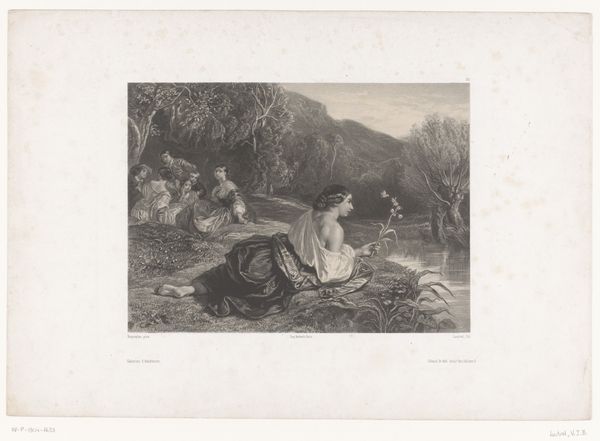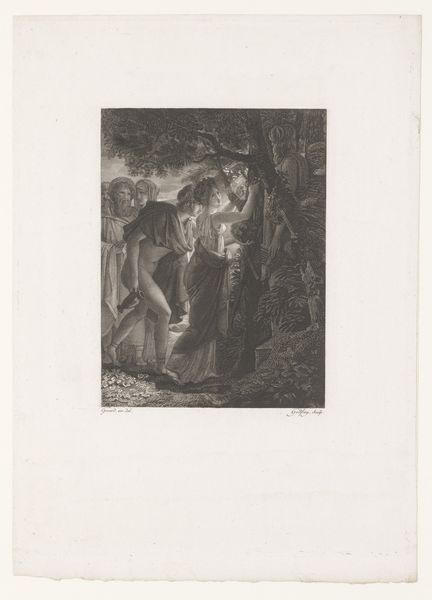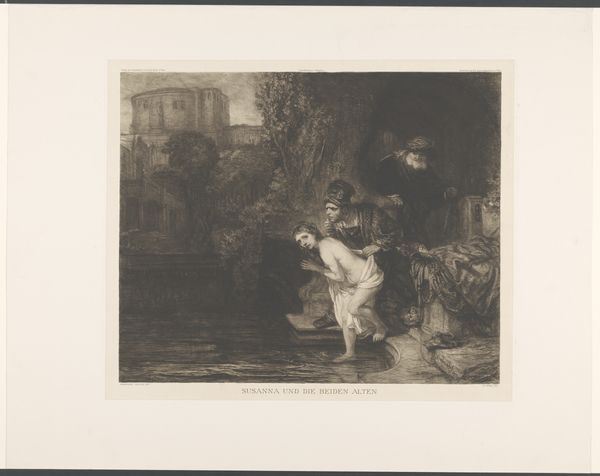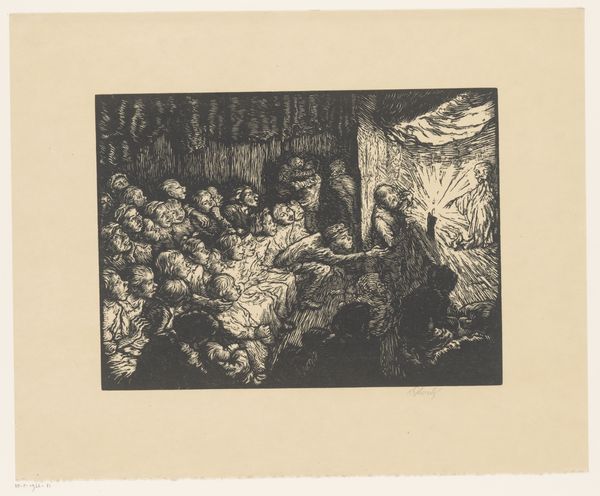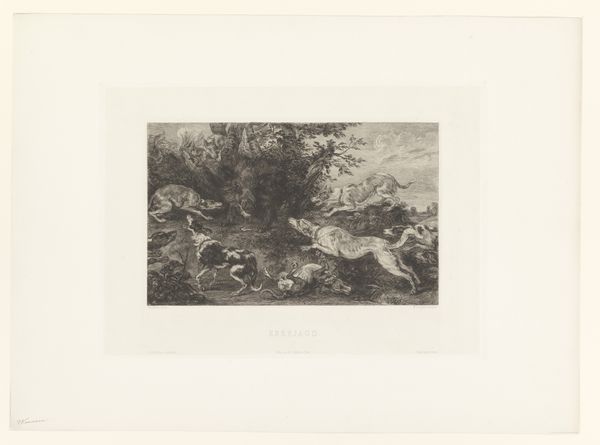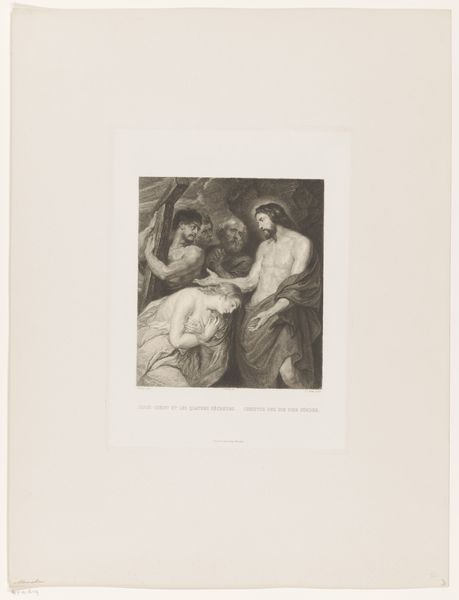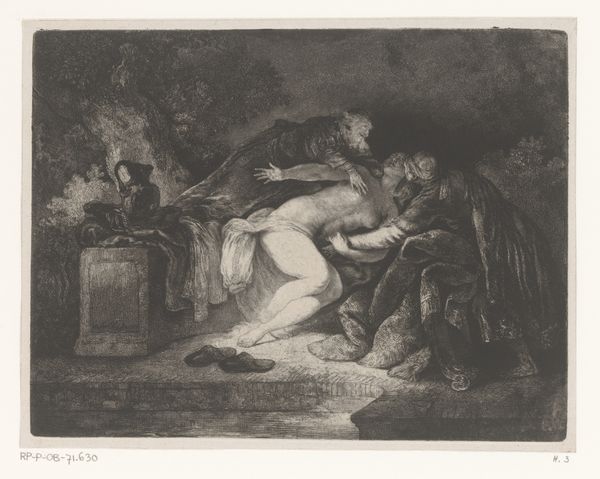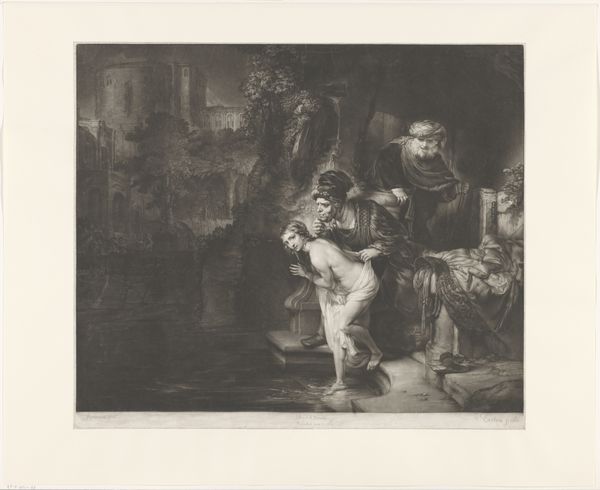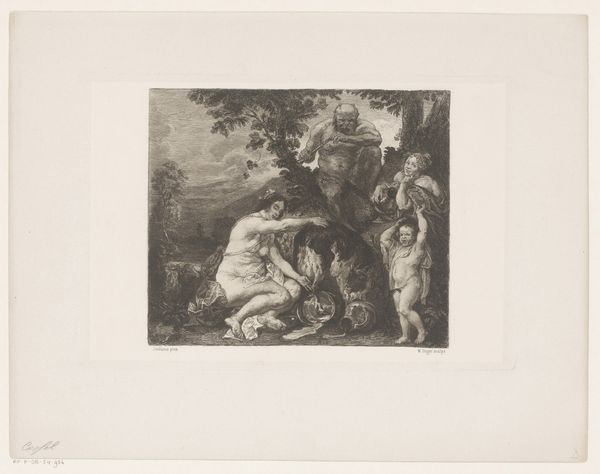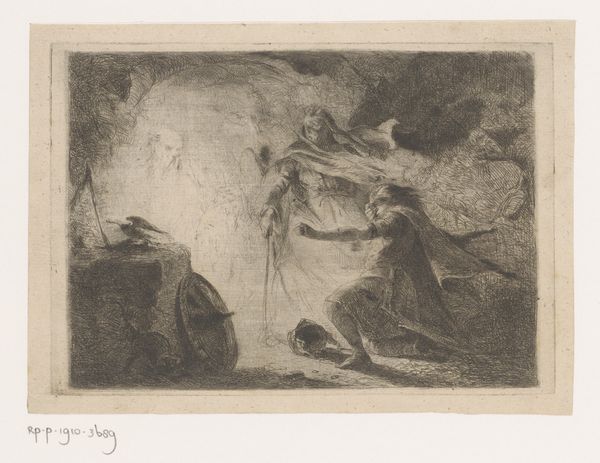
Dimensions: height 295 mm, width 380 mm
Copyright: Rijks Museum: Open Domain
Curator: Here we have "The Prisoner of Chillon," an engraving completed between 1848 and 1862, based on Adolphe Mouilleron's work, currently residing at the Rijksmuseum. What’s your initial reaction? Editor: Claustrophobia! The gloom of that cell just settles in your bones. I imagine the actual Chillon castle overlooking that glittering lake; the contrast is wicked. And that outstretched hand, desperate for... something. It feels theatrical. Curator: It certainly is theatrical. This image speaks volumes about the romanticized view of suffering, doesn't it? Romanticism reveled in emotional extremes. The chains, the crumbling walls, the lifeless body in the corner—each element functions as a signifier of oppression and despair. It evokes the historical past in very sentimental tones, using a poem about political prisoners from the Swiss state. Editor: Absolutely. It's more than just oppression, though. It's a performance of anguish. Look at the placement of the chain: A perfect diagonal slung across the picture space, literally drawing your eye. That’s not just imprisonment, it's staged suffering. It feeds into the period's obsession with the tormented hero. The symbolism of that light feels really critical to creating that mood. Curator: It's definitely a construction. Mouilleron and the engraver played with shadow and light to amplify the drama. And of course, it’s not some fleeting moment captured; it’s meant to endure, a perpetual reminder of the supposed injustice of power. Look closely at the architecture: Those gothic arches become symbols of confinement and darkness in a really architectural metaphor. Editor: That’s exactly the trick, isn't it? To make the stones themselves seem oppressive. And even that small jug near the prostrate figure, is this about quenched spirits, or dashed hopes? Are these not common metaphors across centuries of prison iconography? It's tapping into a shared visual language. Curator: Agreed. It's designed to resonate deeply. The historical details become secondary to the feeling of overwhelming helplessness. A feeling that seems to me less an argument against imprisonment and more about self-righteous sentimentalization. Editor: Well, the artist created an enduring symbol, whatever his original intent might have been. An icon of pain that's undeniably captivating.
Comments
No comments
Be the first to comment and join the conversation on the ultimate creative platform.
